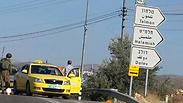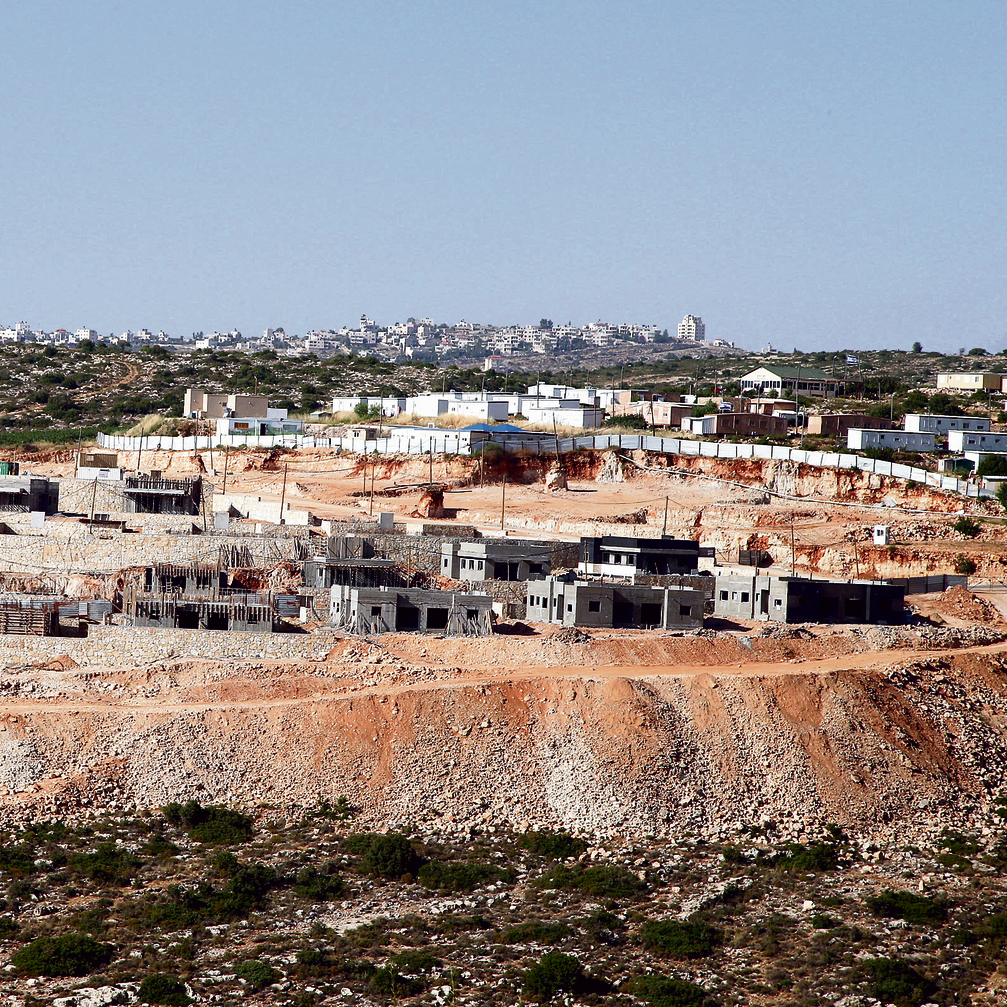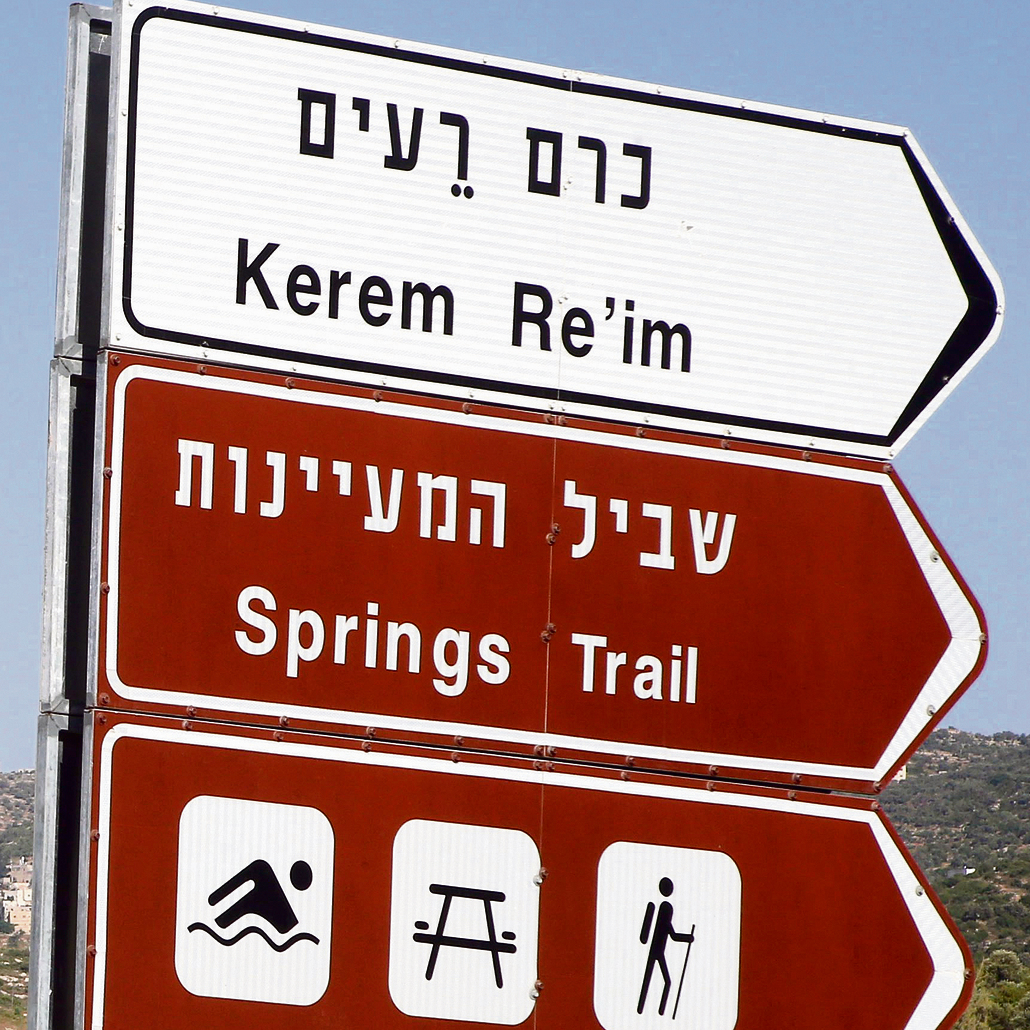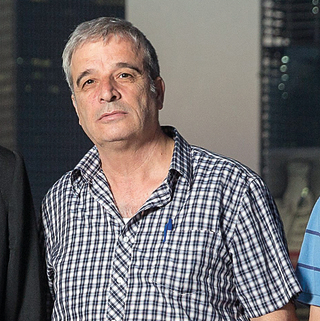

Neighborhood or community: How the settlement enterprise keeps growing
It looks like a community, it is registered as an independent community in regional council documents, and it sits on an isolated hill. Officially, however, Kerem Re’im is defined as a neighborhood belonging to the Talmon settlement in the Binyamin region. Dozens of other communities are being built in the territories using the exact same successful method.
On the ground, however, it serves as an independent community, a settlement for all intents and purposes. It’s a sort of wink which is very common here, in a bid to help the place slip under the radar of the international community, which opposes the establishment of new settlements.
We arrived shortly after 5 pm. In the center of the community, in a small playground, we found six mothers sitting on the small section of grass that had been planted for the residents, with children of different ages running around them. We spotted 15 toddlers, though we may have missed a child or two. Two wooden swings and two colorful slides connected by a crawling device, as well as a bench under an olive tree, turn the small public playground into a pleasant and serene place, which serves as a meeting point for the small community that settled on this hill.
Other residents were sitting outside the caravans which had been placed one next to the other in rows by Amana, the Yesha Council’s settlement movement. The sun was making its way down, and in this pleasant atmosphere, they were sitting and watching their small children walking barefoot against the beautiful view observed from every direction.

The residents of Kerem Re’im, however, have no intention of living in such a crowded place forever. Half-built homes, in advanced stages of construction, stand at the entrance to the community. The construction work began a little less than a year ago and was stopped by a High Court order following a petition filed by the Peace Now movement, which argued that the construction was illegal and did not have the required permits. The petition further demanded that the Supreme Court instruct the Civil Administration to act on the demolition orders it had issued for the buildings. In the meantime, the large construction site stands deserted, the residents are waiting for the court to hand down its ruling, and until that happens—they are living their lives in caravans on the small hill.
While Donald Trump’s visit to Israel was not expected to lead to a renewal of peace negotiations between Israel and the Palestinians, the American president made it clear to Prime Minister Benjamin Netanyahu three months ago that he expected him to restrain the construction in the settlements, and administration officials made it clear that Israel should avoid building in the territories as much as it could to allow the president to restart the peace process.
Officially, therefore, the government is restraining itself when it comes to construction in Judea and Samaria and the establishment of new settlements. In practice, however, the construction in settlements is going on. New settlements are being established on the ground without being officially declared as communities, as part of a method which has become the informal way of growing and spreading the settlement enterprise in the territories.
Between Nationalist Haredim and liberals
The method is illustrated in the story of Kerem Re’im, which is located in the Dolev-Talmonim bloc in the Mateh Binyamin Regional Council. At first, the settlement of Dolev was established in the area in the early 1980s. Then came Nahliel, followed by Talmon in the early 1990s. Talmon generated Neria, which is officially called Talmon Bet, followed by Harasha, which—like Neria—is officially considered a Talmon neighborhood but is actually an independent autonomic community. Kerem Re’im is the last in the Talmonim series for now.
Hagit Ofran, a member of Peace Now’s Settlement Watch Team, says the first caravans were brought to the area in September 2012. At first, the place was called Nahalei Tal, but its name was changed to Kerem Re’im three years later.
“As the establishment of a new settlement in the territories requires a cabinet decision, what we call the political echelon, the settlers have found a patent in the form of unauthorized outposts,” Ofran explains. “They go up to the area, place a few caravans and populate them with families, and slowly lay infrastructures and regulate the place. They always cry that there is a construction freeze, but on the ground you’ll always see construction. They have done pretty well with dozens of illegal outposts, which have actually turned into communities for all intents and purposes.
"Kerem Re’im is a new settlement which has been built from scratch during a period in which new settlements are allegedly not being established. The Mateh Binyamin Regional Council and Amana, which are supposed to act in accordance with the law, are involved in its construction.”

Detailed Master Plan No. 235/10, titled “Talmon—the Nahalei Tal Neighborhood,” was presented in the Civil Administration in February 2013. On May 9 that year, the plan was approved by then-Defense Minister Moshe Ya’alon, paving the way for the continuation of the planning processes. Of course the plan was approved out of an understanding that this was just a neighborhood being added to an existing community. The planner, architect Joshua Shahar, presented the plan to the Civil Administration’s subcommittee for settlements in August 2013 as “a northern neighborhood of the Talmonim bloc, north of Neria.”
Mateh Binyamin Regional Council head Avi Roeh, who also serves as head of the Yesha Council, says the area where Kerem Re’im was established is a very popular residential area.
“Neria is a community with residents from the Chardal (nationalist Haredi—ed) stream, and the building potential there has been almost fully exhausted as it is. The Kerem Re’im guys are young people from the central stream of the national-religious public, open and more liberal people. They came and requested to establish a new community. Their territory is on state lands, a territory which was allotted to Neria by the Settlement Division. Because this land is already there, and because these guys have their unique character and it would be wrong to mix them with Neria, it was decided to give them this spot.”
More than 300 families
We went up to Neria. The sign directing us there says Talmon Bet, but at the entrance we are greeted by another sign in bold letters: “Neria—the home we always wanted,” which makes it clear that we are entering a community rather than a neighborhood.
More than 300 families live here, according to Ariel Vangruber, a Neria resident and member of the community’s secretariat. “When the Kerem Re’im guys came along, we decided together with Amana to allot the territory in favor of the establishment of a new community, which would be different from our community,” he says.
Asked why Neria is official recognized as a neighborhood although it is run as an independent community, Vangruber says the question should be directed at the government. “This conduct was affected by American and European pressure on Israel’s governments. Some of the creative solutions we were required to come up with were to build neighborhoods that function as autonomic communities. A community doesn’t have to receive an Interior Ministry stamp and official recognition to feel like a community. As far as I’m concerned, I live in a completely separate community from Talmon. These are two different places.”
Does your identity card state your place of residence?
“I am registered as a Talmon resident. Is there any logic in the state’s conduct in terms of the settlement here? Absolutely not. And it’s clear to us that the authorities are well aware of the situation on the ground. The fact is that there is a settlement here.”
Even Regional Council Head Roeh is confused by this reality of a community disguised as a neighborhood. At times, he refers to Kerem Re’im as a “neighborhood,” and then sometimes he calls it a “community. The regional council’s official publications include a list of the council’s communities at the bottom of the page. Neria, Harasha and Kerem Re’im appear on the list as communities for all intents and purposes, alongside Adei Ad, Ahiya, Esh Kodesh, Zayit Ra’anan, Tel Zion, Mitzpe Kramim and Givat Haroeh—which are all outposts erected illegally or neighborhoods built next to existing communities. They all appear on the list as independent communities.
“From my perspective as a council head,” Roeh says, “it doesn’t matter if it’s a community or a neighborhood, as long as people are settling in these places, as long as there are houses there with people living in them. Our main mission is settlement. This isn’t Givatayim. As far as I’m concerned, any place defined as state lands which has been handed over to one of the communities with authorization must be settled. As the head of the system, I don’t care if it’s called a neighborhood or a community.”

A basic charter was signed in April 24, 2014, a during a cornerstone laying ceremony for the first permanent neighborhood of Kerem Re’im, Neighborhood A. the charter states that the new neighborhood will include 77 housing units and public areas, adding “We, the undersigned, hereby pledge to try to do everything in our power to speed up and push for the establishment of the neighborhood and its communal, physical, public and private components, in within the shortest period of time possible.”
There are four signatures at the end of the charter: Then-Housing Minister Uri Ariel, Amana Secretary-General Ze’ev (Zambish) Hever, Binyamin Regional Council head Avi Roeh and the cooperative society, which was still called Nahalei Tal at the time.
Four months earlier, in January 2014, the Bimkom non-profit organization submitted an appeal to the Civil Administration against the Kerem Re’im master plan. Architect Alon Cohen-Lifshitz, who signed the appeal on behalf of the NGO, says that “the plan was aimed, among other things, at authorizing illegal construction in the area.”
According to Cohen-Lifshitz, the plan fails to implement one of the planning principles: “When building a new neighborhood, you have to make sure that it is close to an existing constructed area to make it easy to draw water, sewage and electricity infrastructures from that neighborhood. In this case, the proximity principle doesn’t exist. The new community is being built at a distance of almost 800 meters from the last houses of Neria, and more than one kilometer from Talmon.
“We further argued that if they want to build a new neighborhood in Talmon, there are land reserves for that purpose within the constructed community. On the one hand, however, they claim in the plan that it’s a neighborhood, and on the other hand, there are 106 dunams in the plan that are designated for public areas, public institutions, educational institutions, synagogues and a mikveh. You don’t allot such a large public area when building a neighborhood in a small settlement. It has all the characteristics of a community, but in the documents and plans it’s called a neighborhood to prevent a dispute with the Americans.”
Bimkom’s appeal was unaddressed by the Civil Administration for more than three years. Last March, Peace Now petitioned the High Court of Justice against the Kerem Re’im construction. One of the people the petition is directed at is the regional council head, Roeh, who—according to Peace Now—has not only failed to enforce the construction laws in the area, but is also transferring funds to the community from the council’s coffer. The petition is also directed at the Civil Administration.
In response to the petition, the Defense Ministry confirmed that from 2014 to 2016 Civil Administration workers had handed out demolition orders to 57 new illegal building that were erected on the state lands that Kerem Re’im is located on.
“The enforcement and implementation of these orders, like other orders issued by the Civil Administration against planning and construction violations, will be performed in accordance with a list of priorities and subject to operational constraints,” Attorney Eran Ben-Ari from the Defense Ministry’s legal department wrote in response.
Roeh says he is incapable of enforcing the law in the area, adding that that’s the Civil Administration’s job. “But I do budget the place because there are people living there and there are children, and they need a kindergarten there and they need security,” he says.
But it’s a place which has yet to receive permits and is considered illegal.
“It will be legal. The High Court has asked the state for answers, and the state will declare that it plans to regulate the issue and the Hight Court will allot time for that, and in that time Kerem Re’im will be regulated and all problems will be solved.”
Until the matter is regulated, the young residents of Kerem Re’im will keep living in caravans. The half-built homes have been deserted for now, but they are certain that the work will be resumed soon. On HaTe’ena Street in Neria, where Vangruber lives, we saw 16 homes in different construction stages last week.
“At the moment, there are 40 homes under construction in the entire community,” Vangruber says. “There is a high demand to live here. In 2016 alone, we were approached by 70 families. Forty-five arrived for a tour of Neria, and in the summer we took in 30 of them. At the moment, they are living in the caravan neighborhood until their homes will be built. For several years now, the community has been taking in 30 new families every summer.”
‘We want a legal community this time’
A 40-hour drive from there, in the Ofra seminary campus, the Amona outpost evictees are still waiting for the construction of their new community to begin. In late March, the government decided to build them a community in the territories. It was defined as a “historic” moment, as the Israeli government has not made such a decision in more than 20 years—at least not official.
Avihai Boaron, who leads the outpost’s action committee, says the Amona residents wanted to establish a new community which would be legal this time, without any shortcuts. “We were so happy that the government finally decided to establish a community in a legal and proper way. No one wants to steal horses.”
The new situation, he says, creates an unhealthy reality. “On the one hand, the diplomatic agenda suffocates construction. On the other hand, the population is growing and people from the outside want to come live here. This situation creates suffocation, and this suffocation creates uncertainty, which leads to the creation of forced solutions of bringing one caravan followed by another. And if there are caravans and families living here, why not build stone houses? And after they are built, permits are sought retroactively.
“In the meantime, we are waiting for our community to be established according to the government decision. But if we see no progress being made, we will go up independently to the area authorized for our community.”















